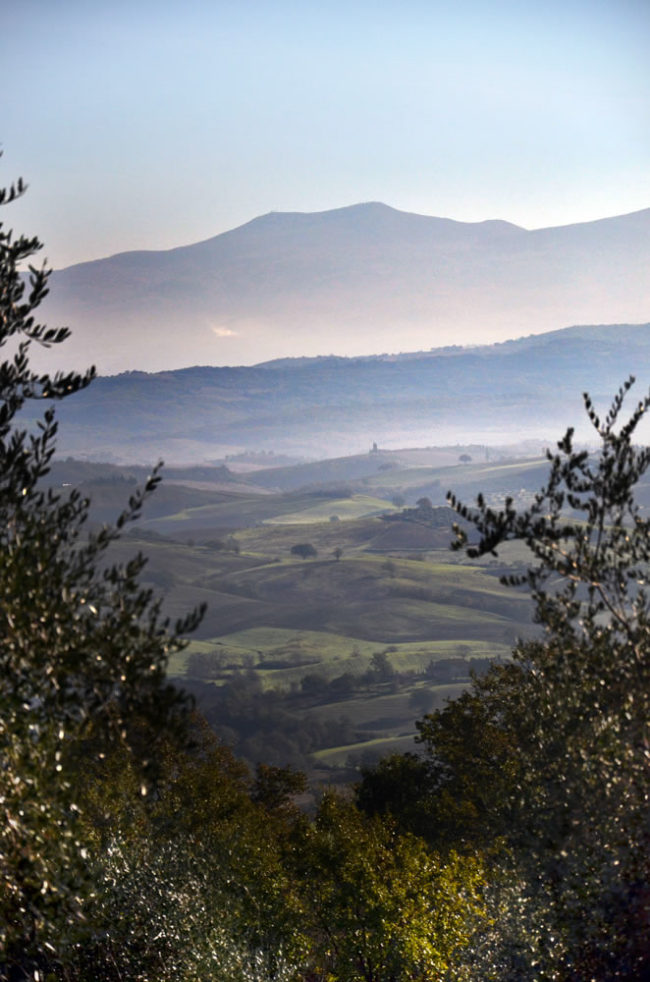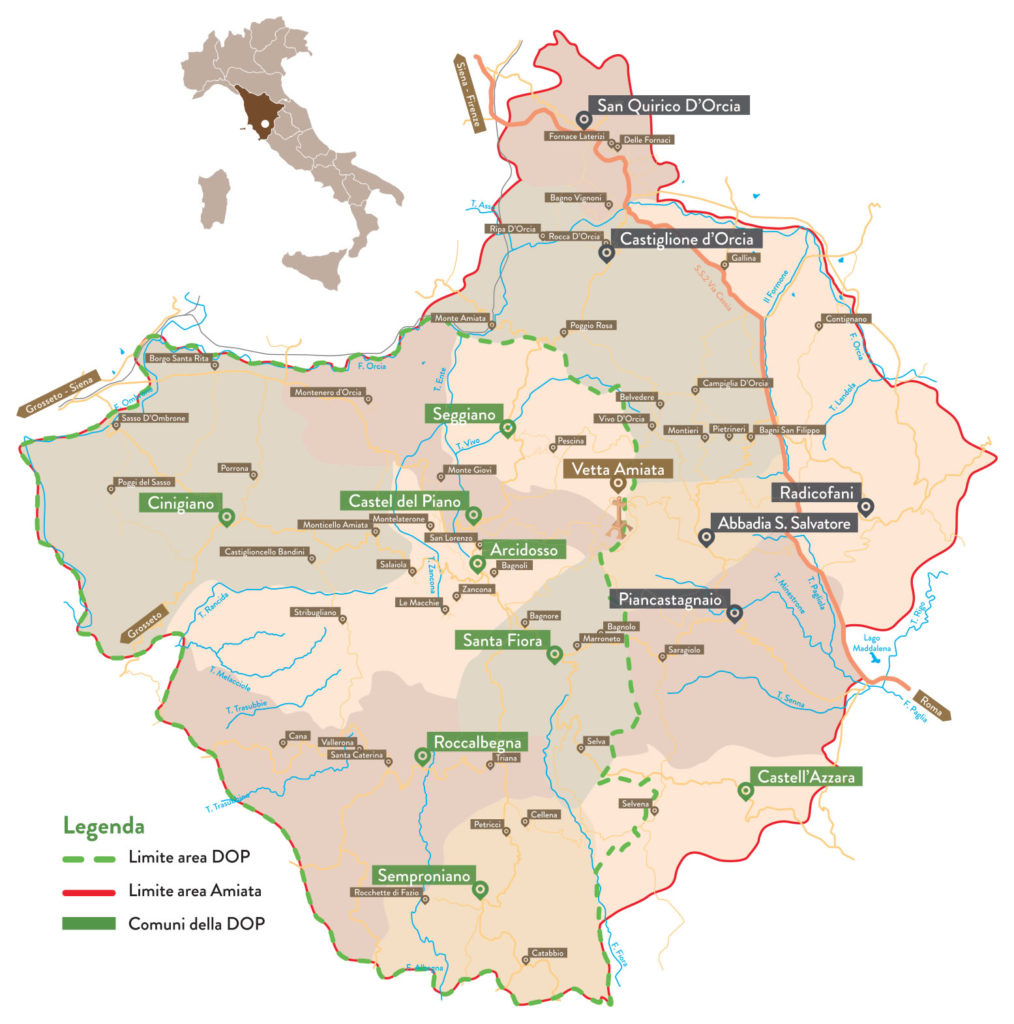
An ancient volcano, now inactive. Mount Amiata is one of the most significant massifs from the geological and naturalistic point of view of the whole Italian territory, as well as a true green lung of southern Tuscany.
A BIT OF HISTORY
Here, in this place of irrefutable beauty, the first documented implantations of olive trees, which follow the deforestation in the hilly area close to built up areas, can be dated to the late Middle Ages, although in this period the predominant local culture remains the vine. It is only in the next centuries that the presence of the olive tree is slowly establishing itself, following also the progressive increase in the demand for oil, both internal and external, to find the period of maximum revamp under the Grand Duchy of Tuscany. Since the eighteenth century, thanks to a renewed scientific approach to agriculture, the expansion of olive groves is accompanied by a new arrangement of the territory delineating the image of the Amiata landscape as we know it today.
THE CENTURIES-OLD OLIVE TREES
The current production of Seggiano PDO Extra-virgin olive oil comes from ultra-centenarian olive trees, a unique and indisputable element in determining its excellent organoleptic characteristics.
The centuries-old olive trees of the whole area have been mentioned in the chronicles and in the diaries of influential figures and travellers. From Piero Leopoldo di Lorena, who in 1783 declared to be amazed at the beauty of the olive trees that overlooked the river Vivo, to Giorgio Santi, who wrote in his travel notebooks: “the mountain side is adorned with beautiful olive groves, which give life to extremely old and extraordinary olives”.
THE GEOGRAPHICAL DELIMITATION OF PDO
The geographical delimitation of Seggiano PDO extra virgin olive oil is within the administrative territory of the municipalities of Arcidosso, Castel del Piano, Castell’Azzara, Cinigiano, Roccalbegna, Santa Fiora, Seggiano and Semproniano in the Province of Grosseto.













